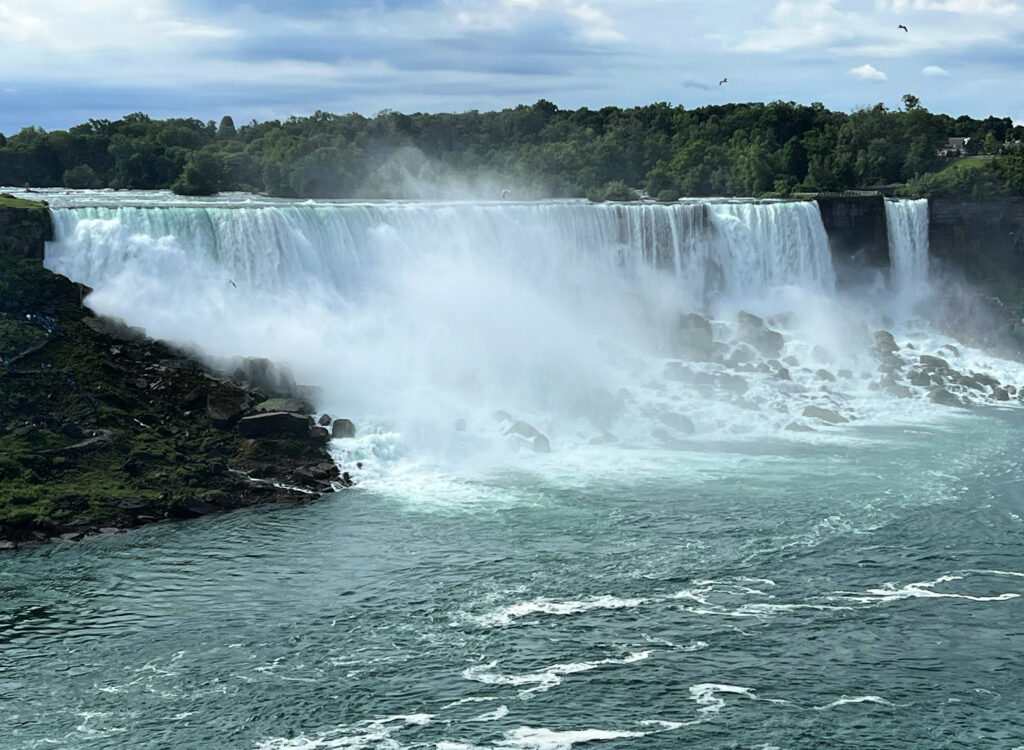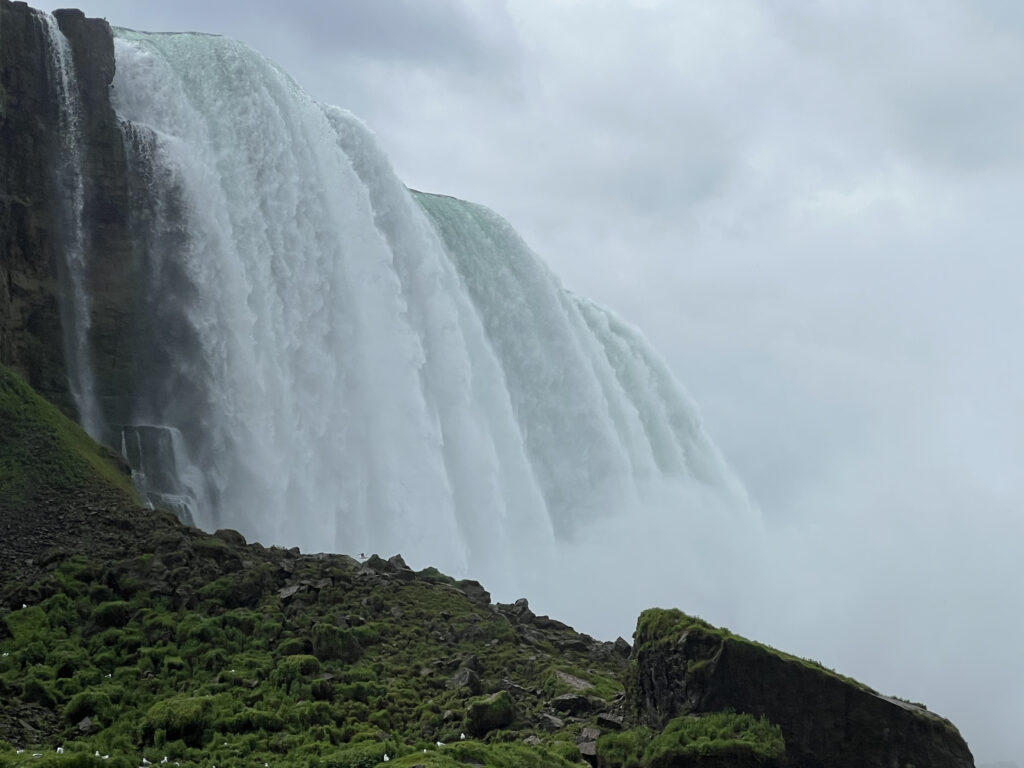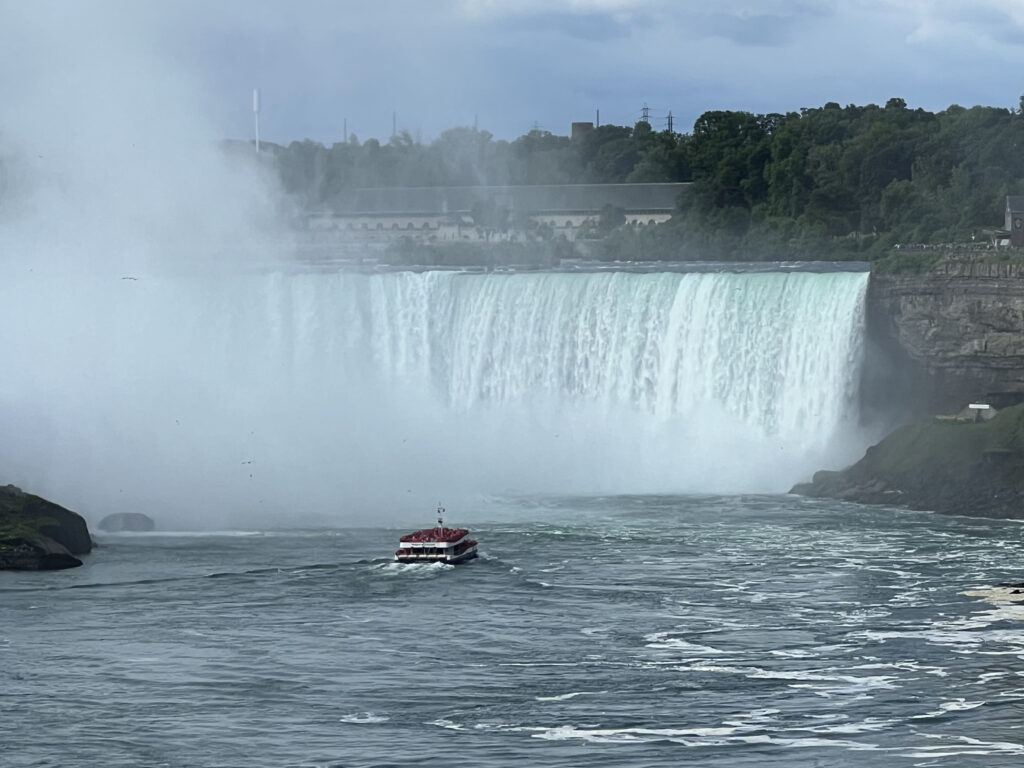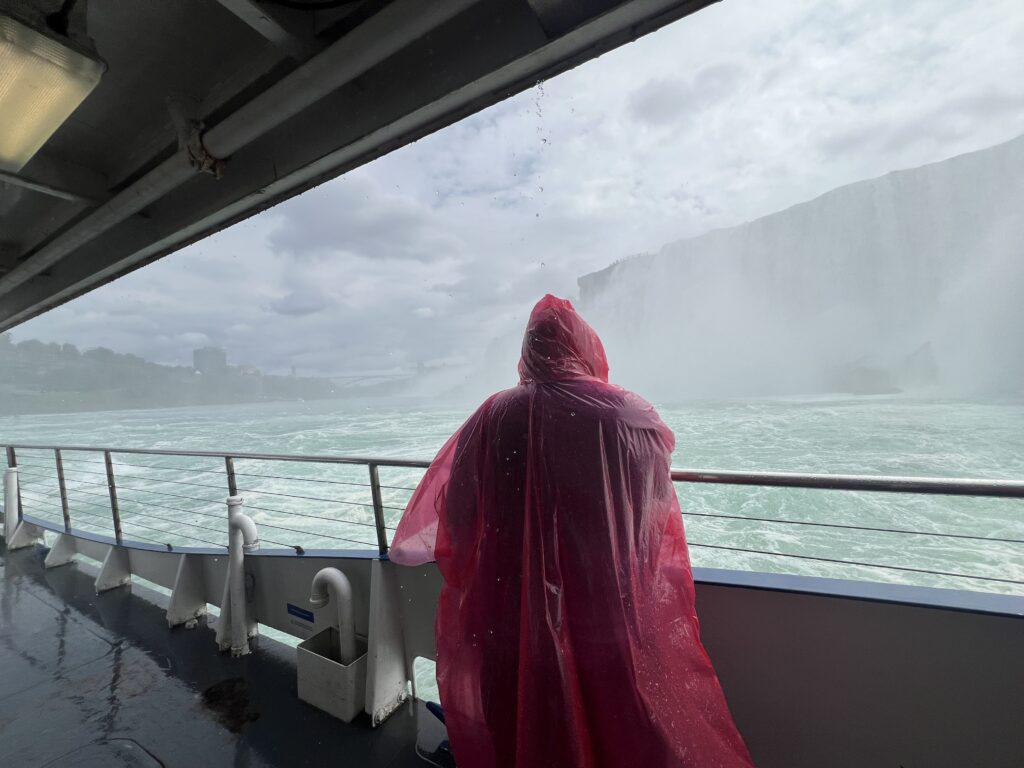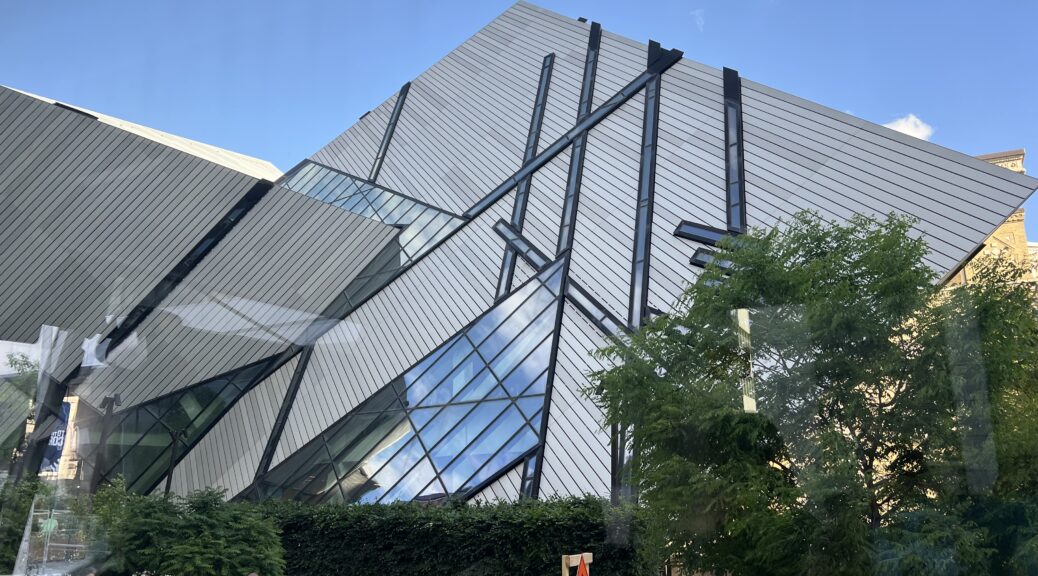
Toronto
We began our Tauck Canadian Capitals tour in Toronto, the provincial capital of Ontario. We have visited Toronto a few times before. On our last trip (Cruising the Great Lakes), one of our stops was the Royal Ontario Museum (ROM). There is a picture of the exterior of the museum above the blog title and you will see a large crystal structure on the exterior of the building. This is named The Michael Lee-Chin Crystal in recognition of a financial gift made by Lee-Chin to support Renaissance ROM, the Museum’s renovation and expansion project. Designed by Architect Daniel Libeskind, the crystal is composed of five interlocking, self-supporting prism structures. They do not attach to the original museum building except for bridges that link them. On this trip, we visited the Museum after hours. A docent showed us some of the European exhibits and we then had our Welcome Dinner at the museum.
We did a harbor cruise and visited the CN Tower on our own. We booked the harbor cruise through Viator, and sat top-side on the sightseeing boat, Oriole. We saw the Toronto skyline and several views of the CN Tower. After the cruise, we had lunch in the harbor area.
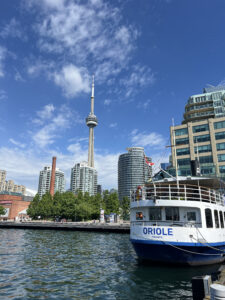
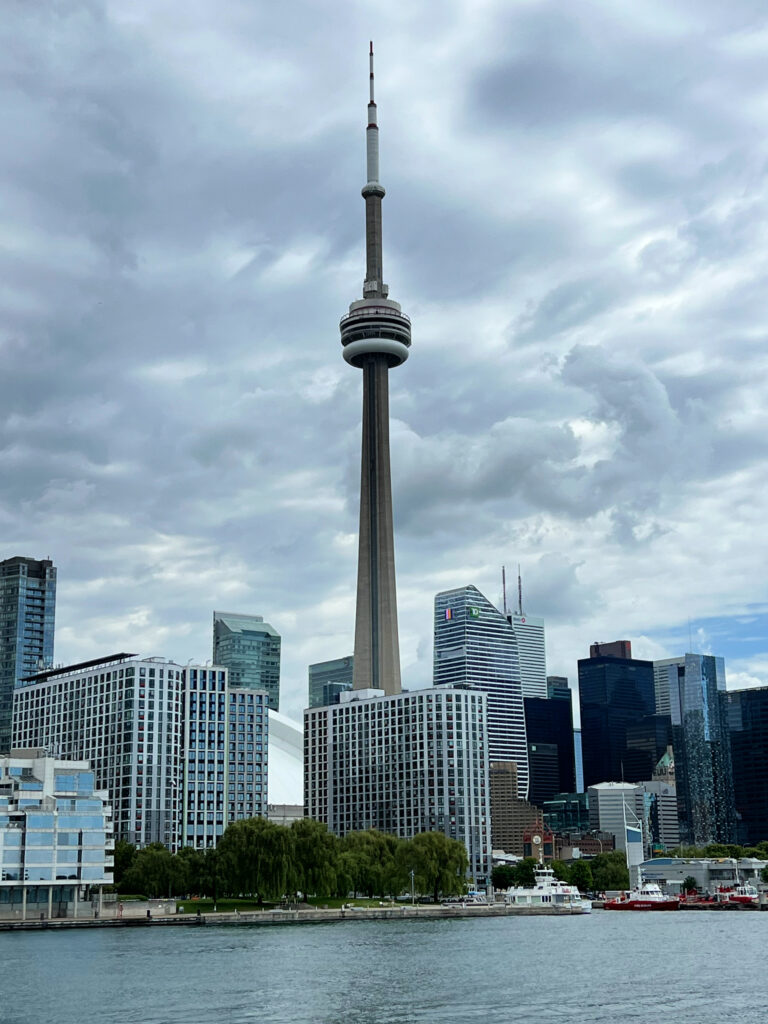
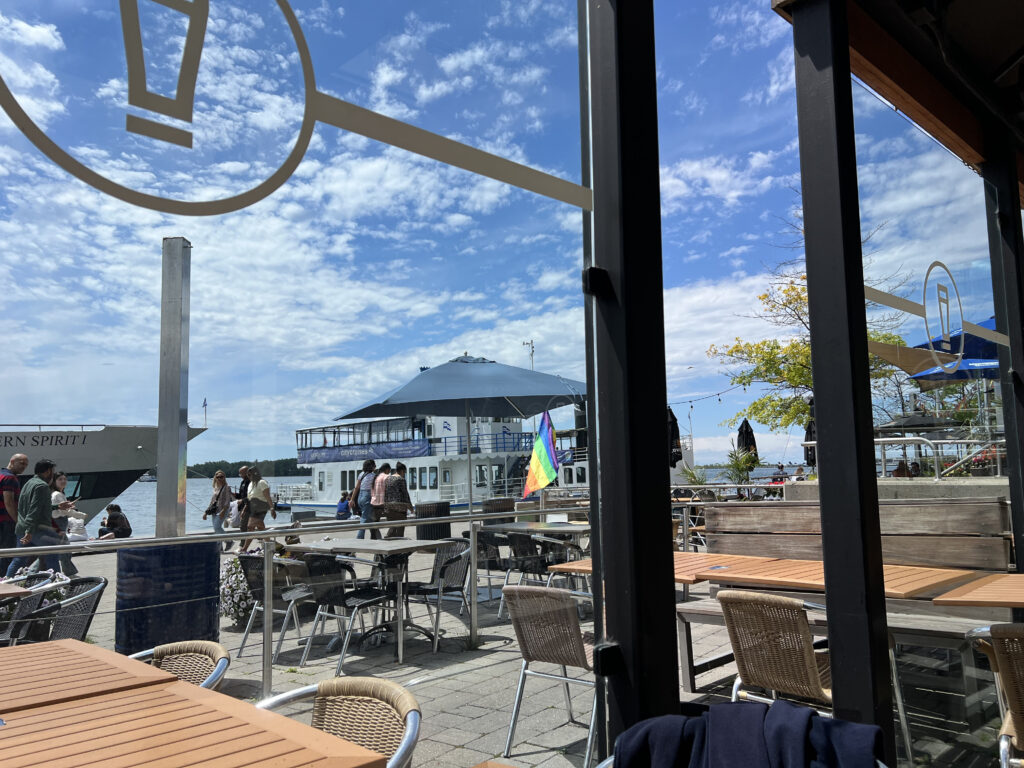
After our lunch, we walked to the CN Tower. The CN Tower is a concrete communications and observation tower and was completed in 1976. Its name, “CN,” refers to Canadian National, the railway company that built the tower. Today it is owned by the Canada Lands Company, a corporation responsible for the government’s real estate portfolio. These are pictures of the CN Tower. The second one was taken at night from our hotel room.

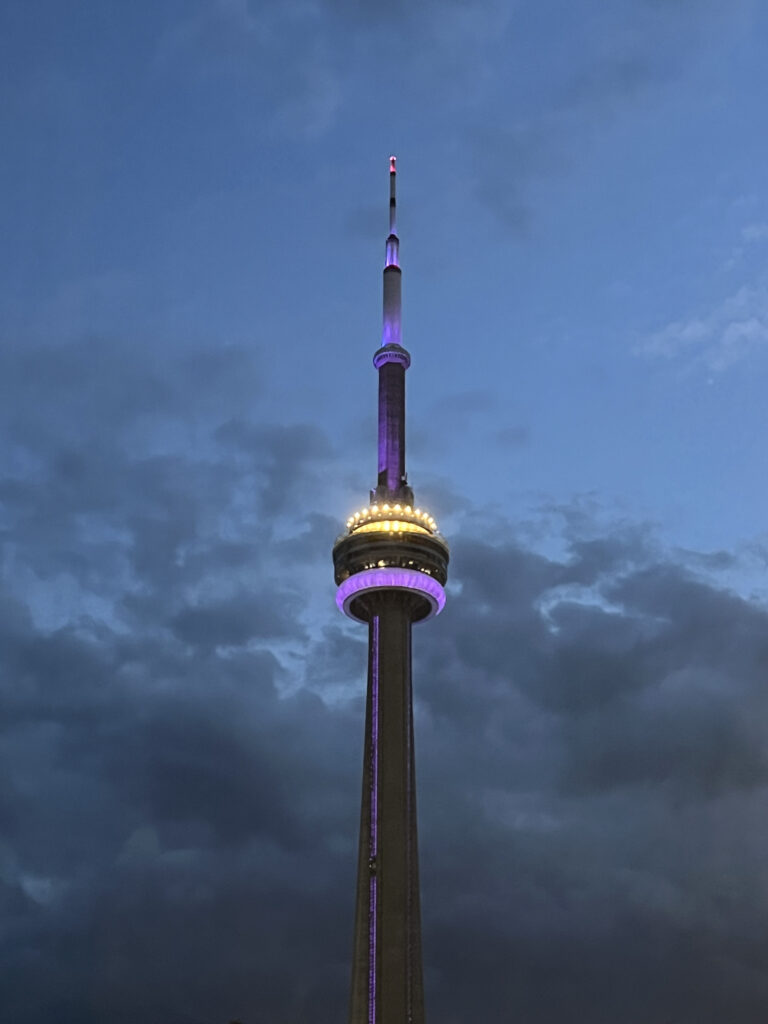
We took a 58-second elevator ride to the observation deck, 1,136 feet above ground. The floor to ceiling windows gave us great views of Toronto and Lake Ontario. We even saw a Blue Jays game in progress.
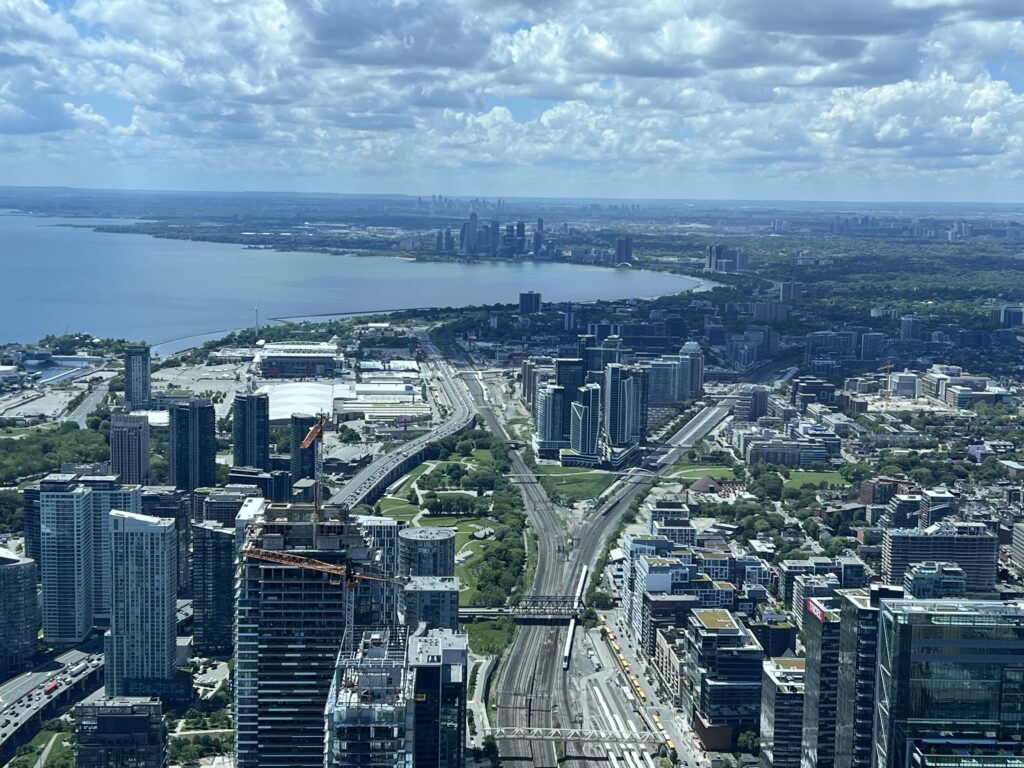
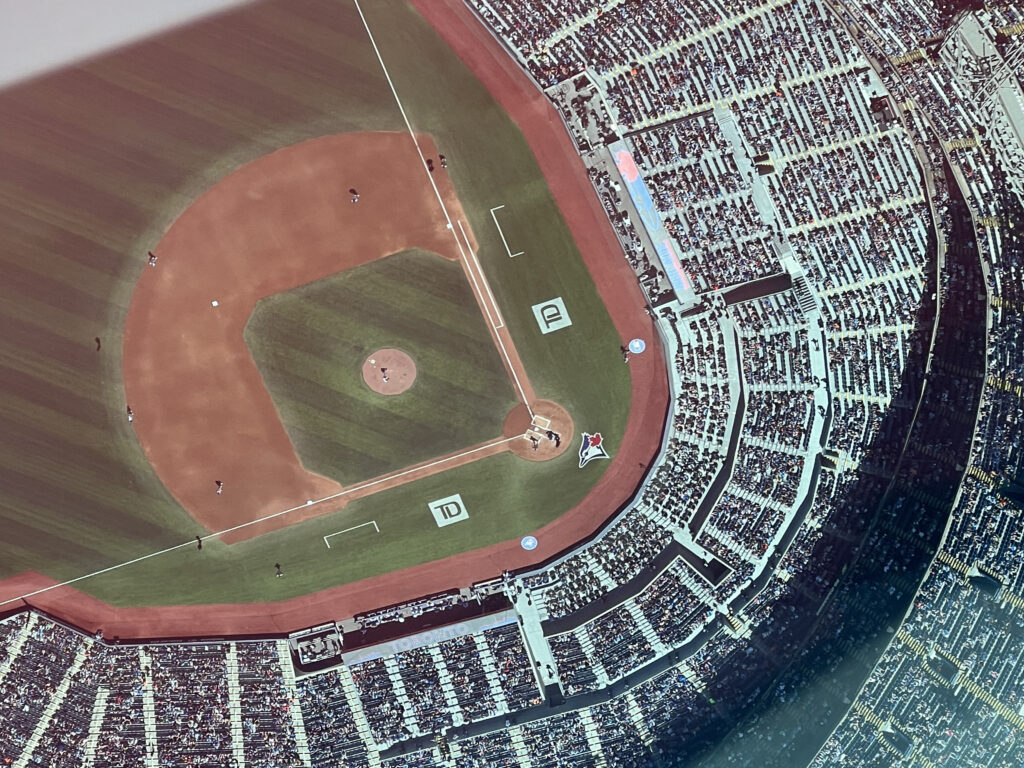
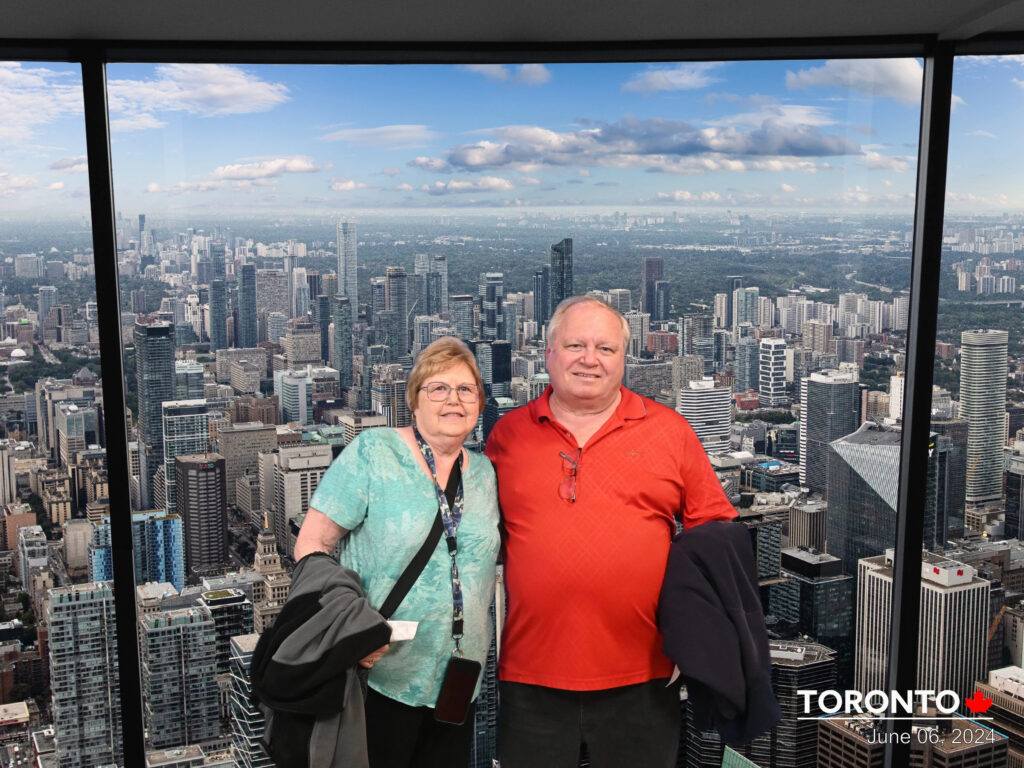
Toronto is a modern city, but glimpses of its history can still be found. The picture below is the Fort York National Historic Site. It was built in 1793 and is the birthplace of urban Toronto. It is best known as the location where the Battle of York took place during the War of 1812. Americans, hoping to expand into Canada, stormed Fort York, defeating the 750 British and Ojibwa Indians defending what was at the time the capital of Upper Canada. Though Americans managed to capture Fort York and forced the British to retreat to Kingston, American expansion never came to fruition.
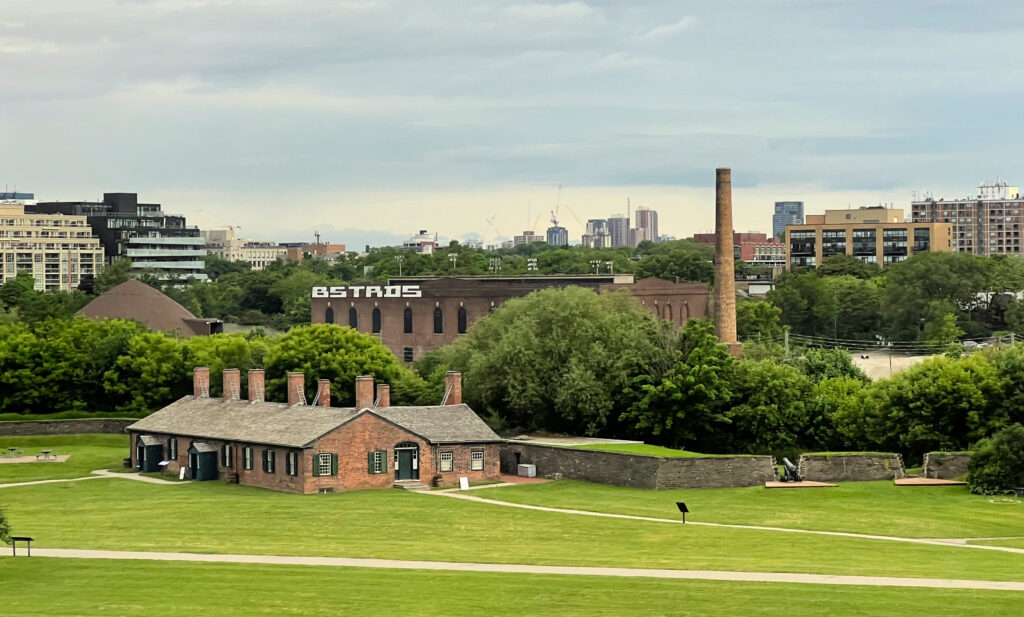
Our tour took a day trip to Niagara Falls. The Falls are actually made up of three separate falls. The American Falls and Bridal Veil Falls lie within the United States (first two pictures below). Horseshoe Falls, or the Canadian Falls, are within Canada (third picture below). In addition to its beauty, Niagara Falls are a significant source of energy.
Energy from the Niagara River has been harnessed for hydro-electric power generation as far back as the mid-eighteenth century. Power generation facilities along the Niagara River supply more than one-quarter of all power used in New York State and Ontario. Under an international treaty, the flow of water over Niagara Falls is reduced during the night to allow more of the water to flow into intakes used for power generation. This plan ensures that the Falls’ natural beauty remains unaffected during prime viewing hours.
https://www.niagarafallsusa.com/planning-tools/about-niagara-falls/fun-facts/
We rode on the Maid of the Mist very close to the falls. Because of the direction of the wind, we got quite a spray on our faces. We visited Niagara Falls on our Cruising the Great Lakes tour. More information about the Falls can be found at: https://sharingtravelmemories.com/niagara-falls/
